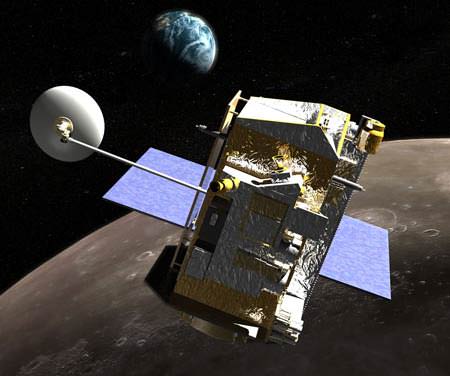[/caption]
NASA’s Lunar Reconnaissance Orbiter (LRO) is changing our view of the Moon by literally bringing it into sharper focus with its three high resolution cameras. But now, things are about to get even sharper. Today, LRO fired its thrusters to begin dipping down from its usual orbit about 50 km above the surface and moving to an orbit that will allow the spacecraft’s cameras me to image the Apollo sites from about 20 km away.
“This will allow me to obtain images of the Apollo sites that are about 4 times sharper than my current best images,” said the LRO spacecraft on Twitter.
This is just a temporary orbit and the spacecraft will take images of and around the Apollo sites between August 14 and 19, 2011. After that, the spacecraft will return to the 50-km-orbit until December.
LRO has two narrow angle cameras (NACs) and one wide angle camera (WAC).
According to Mark Robinson, LROC Principal Investigator, who spoke at the Lunar Forum at Ames Research Center last month, as of the end of July, 2011 the amount of data returned by LRO has been about 400 gigabits of data every day, which includes 371,027 high resolution images. The WAC has taken about 160,000 images, with about 90,000 in color. In total, the spacecraft has imaged the entire Moon about 20 times with the WAC, and has imaged 20 per cent of the moon with NACs, which provides a narrower but higher resolution view.
“We want to map the whole moon at 50 cm/pixel to 200 cm/pixel, and that would be LROC’s legacy for the next 100 years of lunar exploration and science,” Robinson said.
He noted that all three cameras are performing way better than he had hoped.
“We are very excited about the quality of the data,” Robinson said.
So get ready for a little more quality views of the Apollo landing sites!
Update: as commenter MoonOrBust noted, the LRO Twitter feed had an addendum later in the day, adding that there are several technical challenges associated with getting improved resolution images at the lower altitude orbit. For example, the spacecraft will not slow from its orbital speed of about 1.6 km/s (about 3,500 mph) when it gets closer to the Moon’s surface, which might cause some image blurring, particularly for the LROC Narrow Angle Camera images. “However, it will certainly be fun to compare the images from the different orbits!” the spacecraft Tweeted.


Very exciting! Can’t wait to see these…
The LRO spacecraft twitter feed has posted a clarification. There are a number of technical challenges that may prevent reaching this resolution. The images will still be blurred due to the motion of the spacecraft, for example.
This will a desperse the Moon Landing Myths held by so many who also believe you can buy and own a star!
The comparison with the airport photo is accurate. The luggage carts are resolved about the same accuracy as the artefacts on the moon.
{spam link removed by a moderator}
You my friend are lacking in the grey matter department for posting that link.
No it won’t. That’s the thing with conspiracy theories – each new bit of information contradicting their conspiracy is summarily dismissed as “fake” or “disinformation” or whatnot.
Agreed. I’ve seen all kinds of claims that photographic images were digitally manipulated from Ed White’s spacewalk, Hubble Telescope pictures, the surface of Mars, and, of course, the Moon landings. Some wonder why images are “grainy” or “out of focus” as if it were done on purpose. This will go on and on, no doubt.
“For example, the spacecraft will not slow from its orbital speed of about 1.6 km/s (about 3,500 mph) when it gets closer to the Moon’s surface”
I don’t understand how this is possible. Don’t they have to slow the spacecraft with a retrograde burn to dip from a 50km orbit to a 20km one?
The lowering of an orbit, when done via short duration maneuvers, usually requires 2 delta-velocity burns, one at the original orbit, then at the arrival altitude to “insert” into the lower orbit. The first burn is a slow-down, or retrograde burn. The second burn is a also a retrograde burn to circularize the orbit at the lower altitude. The orbit velocity at the conclusion of the burns is higher than the orbit velocity at the original, higher orbit. This apparent paradox occurs because the first lowering burn changed the orbit such that the opposite side of the orbit from the burn is much lower, thus picks up kinetic energy from the altitude of the first burn and accelerates as it flies closer to the earth.
Interesting… So a plus delta-V reduces your orbiting velocity and a minus delta-V increases it? Completely counter-intuitive, but it makes sense. Kinda.
Thank you so much! I’ve always misunderstood this aspect of orbital mechanics. Between your post and the Wiki page on Hohmann transfer orbits, I think I’m starting to get it…
Conspiracy theorists are like cults, no evidence will satisfy them. They will claim that Apollo Moon landings were faked even if they were standing right next to them as they were happening. Everything is fake and NASA is holding captured green Martians in their bunkers at Area 51 apparently, everything else is nonsense 🙂